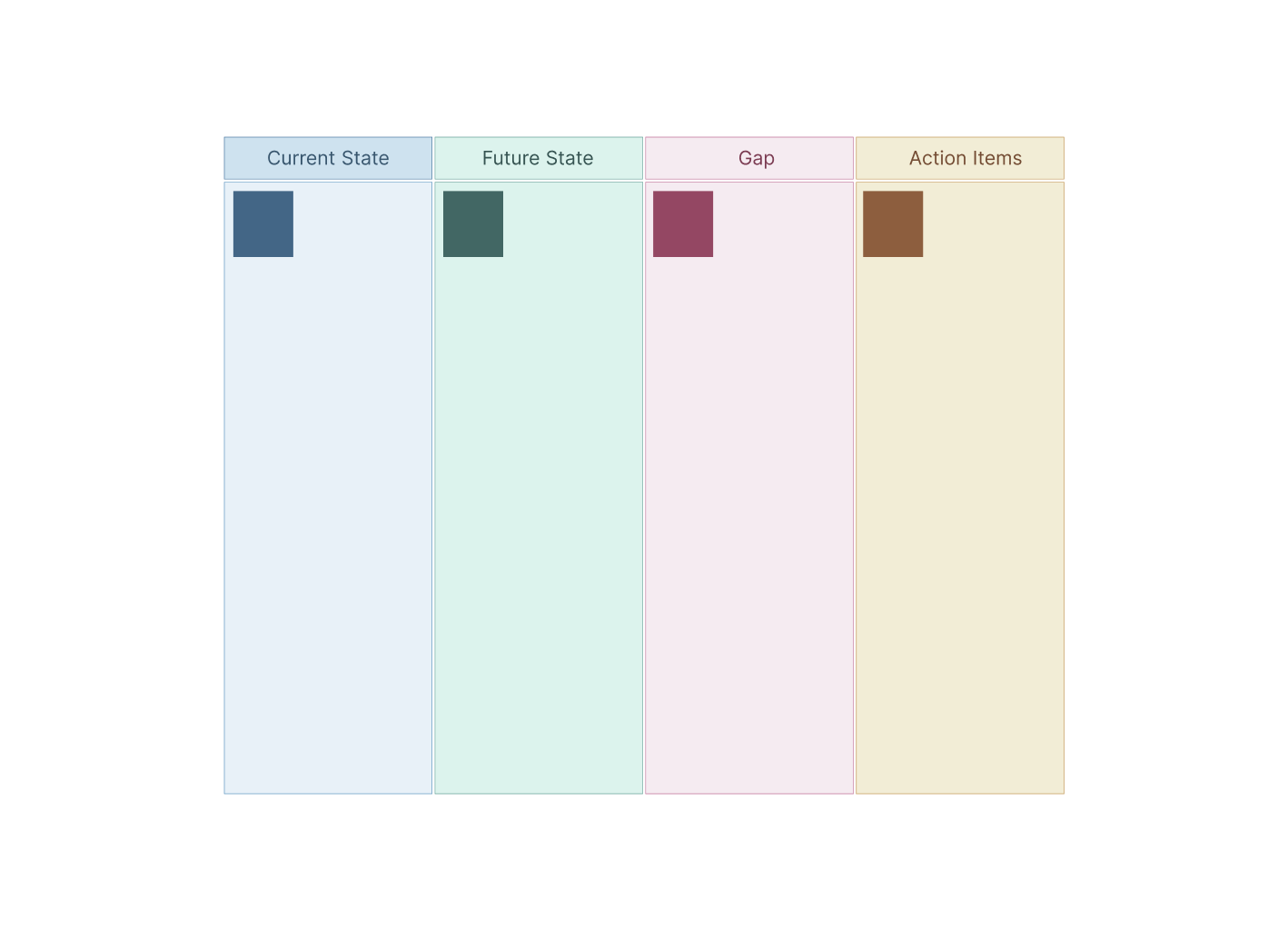Gap analysis is all about spotting the difference between your current state and your goals, then finding ways to close that gap. Seeing real-world examples—like a company identifying skill shortages, a hospital meeting new compliance rules, or a manufacturer streamlining processes—makes it easier to understand how it works in practice.
In this guide, we’ll explore practical gap analysis examples from different industries so you can see exactly how organizations identify problems and take action to fix them.
Practical Examples of Gap Analysis to Identify and Bridge Gaps
1. Skills gap analysis example
An organization reviews its workforce capabilities and finds that several critical skills needed for upcoming projects are missing or outdated. The gap analysis identifies areas where employees need additional training and highlights roles that may require new hires to meet future business needs.
2. Process gap analysis example
A manufacturing plant discovers its order fulfillment process is slower than competitors. The analysis reveals bottlenecks in packaging and dispatch, leading to a streamlined workflow and reduced delivery times.
3. Technology gap analysis example
A school uses outdated learning management software that doesn’t support remote learning. The gap analysis recommends upgrading to a cloud-based system to improve access for students and teachers.
4. Performance gap analysis example
A sales team is achieving only 70% of its quarterly targets. The gap analysis finds missed follow‑ups and inconsistent lead tracking, prompting changes in CRM usage and sales processes.
5. Compliance gap analysis example
A healthcare clinic reviews its operations and discovers it’s not fully meeting updated patient data privacy regulations. The gap analysis guides updates to policies, staff training, and security measures.
6. Customer service gap analysis example
A hotel receives low guest satisfaction scores for check‑in times. The analysis uncovers understaffing during peak hours and prompts changes to scheduling and front desk processes.
7. Marketing gap analysis example
An online store sees high website traffic but low conversion rates. The gap analysis points to unclear product descriptions and missing trust signals, leading to improved copy and reviews.
8. Supply chain gap analysis example
A food manufacturer faces frequent delivery delays. The analysis reveals over-reliance on a single supplier, prompting diversification and better supplier agreements.
9. Human resource fit gap analysis example
A company reviews its workforce and finds certain employees are in roles that don’t fully match their skills or career goals. The gap analysis suggests reassignments, training, and revised hiring to improve role fit and performance.
10. Financial gap analysis example
A company finds it’s missing annual revenue goals and overspending on stationery. The gap analysis identifies ways to increase income and cut waste to improve overall financial performance.
Creately AI Gap Analysis Template
Creately offers an AI-powered gap analysis template that makes it quick and easy to map your current state, future goals, and the gaps in between. Instead of starting from scratch, you can describe your situation in plain language, and Creately AI will auto‑generate a structured gap analysis diagram.
Once generated, you can:
- Edit and refine the details with your team in real time
- Add notes, tasks, and linked resources directly to the diagram
- Use built‑in shapes, swimlanes, and connectors to customize your analysis
- Share it with stakeholders or export it for reports and presentations
Creately makes gap analysis fast, accurate, and effortless. In minutes, you can: It’s everything you need to go from analysis to action — all in one place.FAQs About Gap Analysis Examples
What is the purpose of gap analysis?
What are the common types of gap analysis?
How can I use Creately’s gap analysis examples?
Can I collaborate on Creately’s gap analysis examples with my team?
Can I export my customized example?
Can I turn my gap analysis into an action plan?
Can I add supporting notes and resources?
What is the best software to conduct a gap analysis?







